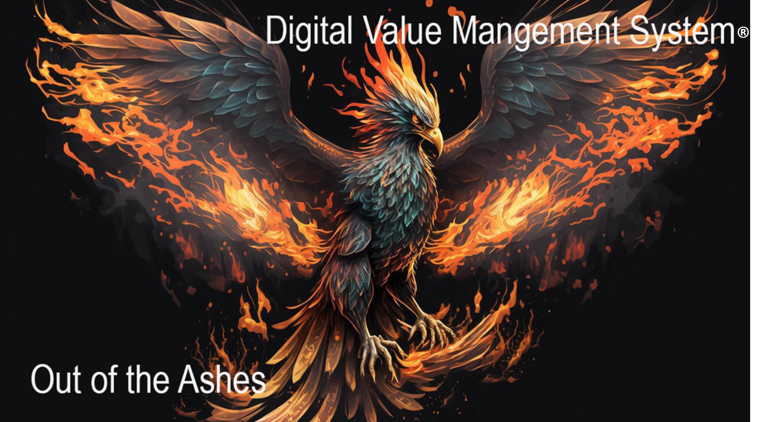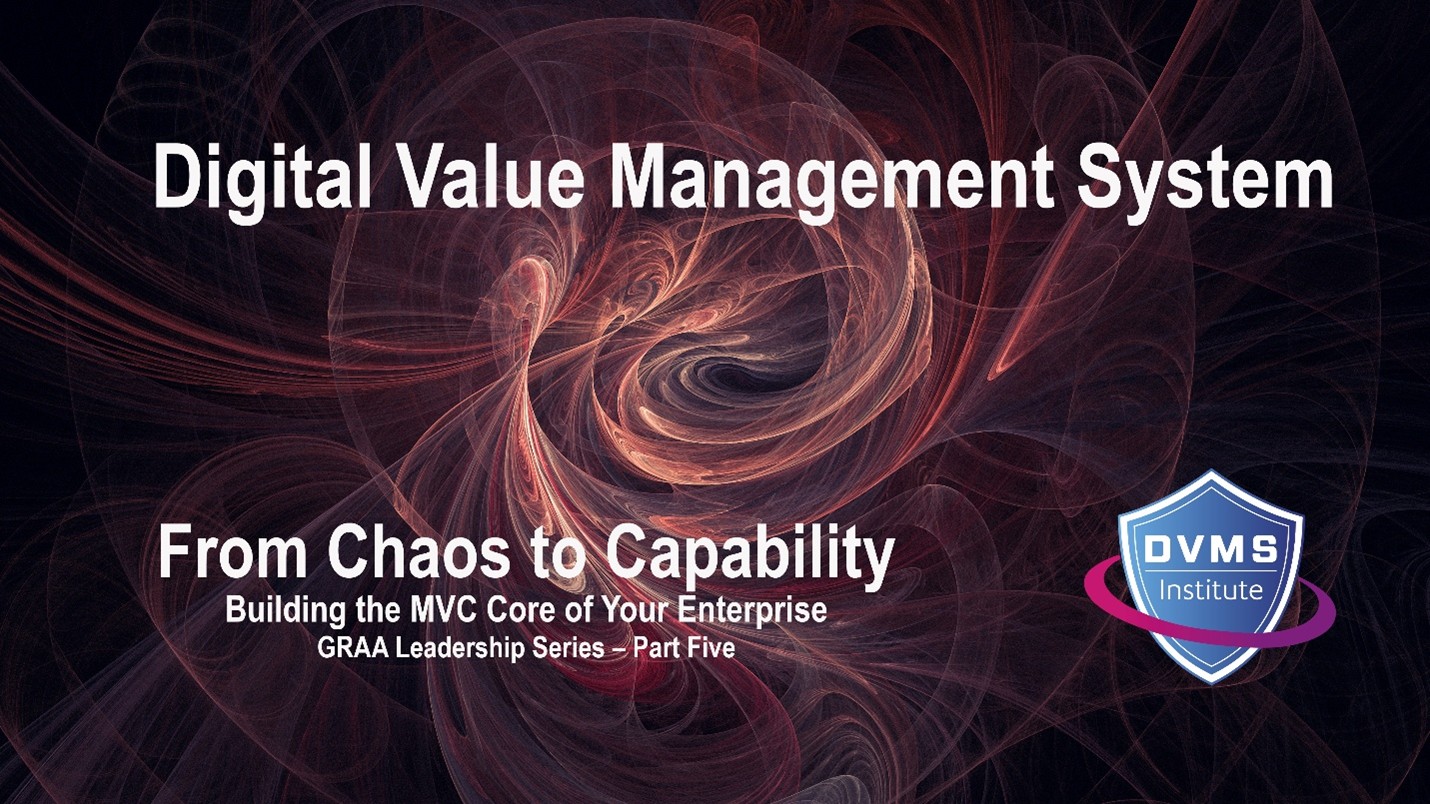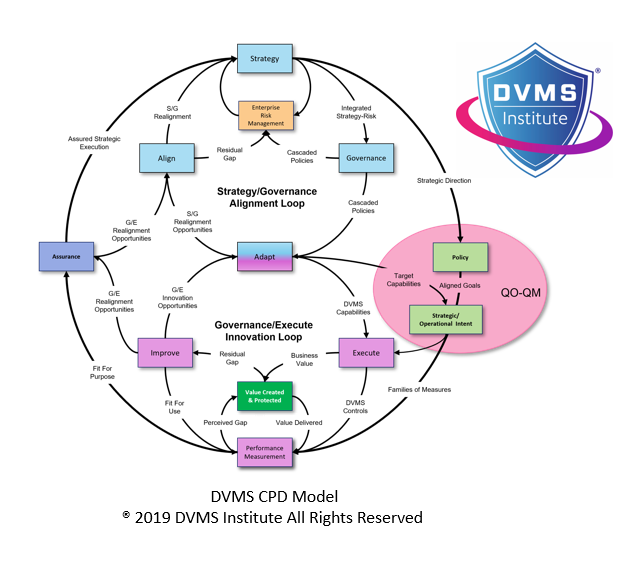From ITIL® Dilemma to Digital Value -How the DVMS® Retains ITIL Investments While Enabling Adaptive Governance and Resilience
David Nichols – Co-Founder and Executive Director of the DVMS Institute
Forrester’s recent paper, The ITIL Dilemma: Balancing Investment with Value in IT Service Management, strikes a nerve for many organizations. ITIL has been the cornerstone of IT service management for decades, with thousands of companies and professionals investing heavily in processes, certifications, and toolsets aligned to its guidance. Yet, as Forrester points out, ITIL is struggling to keep pace with the realities of today’s digital business environment: agile ways of working, accelerating cyber risk, and rising stakeholder expectations for trust.
For executives who have poured resources into ITIL adoption, this creates a difficult question: How do we retain that investment without getting stuck in a legacy model?
The good news is that the answer isn’t to abandon ITIL. Instead, it’s about reframing its role. That’s where the Digital Value Management System® (DVMS) comes in—a next-generation management approach that integrates ITIL with other best practices (NIST, ISO, DevOps, Agile, COBIT, or any other ITSM framework) into a unified, adaptive system for governing, protecting, and delivering digital business value.
This article explores how the DVMS resolves the ITIL dilemma by retaining the value of ITIL investments while unlocking the agility, resilience, and trust needed to thrive in today’s complex digital environment.
The ITIL Dilemma, Summarized
Forrester’s critique is blunt. ITIL v3, dominant in the 2000s, introduced a rigid, process-heavy model that many leading organizations bypassed in favor of more flexible DevOps methods. ITIL 4 sought to modernize, adding value streams and holistic principles, but uptake has been hampered by rising certification costs and diminished accessibility under its current ownership.
The dilemma, as Forrester frames it, is that organizations have invested heavily in ITIL training, certifications, and tool alignment, yet the framework’s ability to deliver real business value is waning. Leaders are left asking:
- Do we double down on ITIL and risk falling further behind?
- Do we abandon it and write off millions in sunk costs?
- Or is there a way to retain the investment while moving toward more adaptive, value-focused outcomes?
Reframing the Question: From GRC to GRA
One of ITIL’s biggest shortcomings lies in its siloed application. It often gets reduced to “governance, risk, and compliance (GRC)” checklists that create friction rather than coherence. Processes become isolated rather than integrated, and the result is more bureaucracy than business value.
The DVMS reframes this problem by shifting from GRC to GRA: Governance, Resilience, and Assurance. Instead of treating compliance as a goal in itself, DVMS embeds governance and resilience directly into the creation and delivery of digital business value. Compliance becomes a natural outcome of resilient operations, while assurance provides stakeholders with confidence in outcomes.
This reframing is crucial because it shifts the purpose of ITIL from process adherence to value enablement. ITIL practices aren’t discarded; they’re operationalized through the DVMS overlay to serve strategy, governance, and operations in an integrated way.
How the DVMS Retains and Extends ITIL Investments
Organizations don’t need to rip and replace ITIL. With the DVMS, they can retain ITIL where it’s strong while eliminating its weaknesses. Here’s how:
- Operationalizing ITIL through the CPD Model
- The DVMS CPD (Create, Protect, Deliver) Model provides the structure for aligning ITIL processes with business value.
- Incident, change, and service request management are no longer standalone ITSM processes—they become part of how the organization creates, protects, and delivers value to its ecosystem.
- Mapping ITIL to Minimum Viable Capabilities (MVC)
- The DVMS MVC approach surfaces gaps in organizational capabilities across strategy, governance, and operations.
- ITIL practices can be retained, but they are evaluated against what’s minimally viable for resilience and trust. This prevents “over-engineering” while ensuring ITIL contributes to enterprise-wide goals.
- Integrating ITIL into the 3D Knowledge Model
- ITIL is positioned along the X-axis (behavior) and Y-axis (structure), but DVMS introduces the Z-axis—leadership.
- This integration ensures ITIL is not a technician’s playbook but part of an adaptive, leadership-driven management approach that spans the entire digital ecosystem.
- DVMS FastTrack Adoption and Phased Integration
- Rather than wholesale transformation, DVMS enables phased adoption.
- ITIL processes can be prioritized, integrated, and modernized in waves—delivering quick wins while building momentum toward systemic resilience.
Side-by-Side: ITIL Alone vs. ITIL within the DVMS
| Dimension | ITIL Alone | ITIL within the DVMS |
| Purpose | Process compliance and service efficiency | Creation, protection, and delivery of digital business value |
| Focus | Incident, change, service processes | Integrated governance, resilience, assurance |
| Adaptability | Rigid, process-heavy | Adaptive, outcome-driven |
| Compliance | Checklist-based, often siloed | Emergent from resilient, trusted operations |
| Leadership Engagement | Limited to IT service managers | Embedded across board, executives, and operations |
| Outcome | IT efficiency | Enterprise resilience, regulatory assurance, digital trust |
This comparison highlights the DVMS advantage: ITIL doesn’t disappear, it becomes more valuable because it’s finally connected to strategy and outcomes.
Addressing the Forrester Challenge
Forrester warns against “chasing ITIL for its own sake.” Organizations that continue pouring resources into certifications and tools without integrating ITIL into broader digital value management risk diminishing returns.
The DVMS directly addresses this warning:
- Agility over rigidity – By embedding ITIL into an adaptive overlay, organizations gain flexibility without discarding proven practices.
- Value over process – ITIL processes serve business outcomes, not the other way around.
- Integration over fragmentation – ITIL is one of many best practice sources (alongside NIST, ISO, COBIT, DevOps) that the DVMS unifies into a single coherent system.
In short, the DVMS resolves the ITIL dilemma by ensuring that existing investments remain productive while organizations move toward resilience and trust.
Practical Implications for IT Leaders
For CIOs, CTOs, and service management leaders, the path forward isn’t to abandon ITIL or to double down on it—it’s to elevate it through integration. Practical steps include:
- Reassess ITIL processes against the MVC – Identify where ITIL delivers value and where it creates drag.
- Align ITIL practices to the CPD Model – Map existing processes to value creation, protection, and delivery outcomes.
- Engage leadership across the Z-axis – Ensure ITIL is not an “IT thing” but a shared responsibility for governance and resilience.
- Adopt phased DVMS FastTrack implementation – Start small, build resilience incrementally, and scale successes.
- Measure outcomes, not process adherence – Replace “how many change records closed” with metrics tied to resilience, trust, and assurance.
The Bigger Picture: From Service Management to Digital Value Management
The ITIL dilemma is really a symptom of a bigger problem: treating service management as a siloed IT discipline. The digital era demands more. Cyber threats, regulatory requirements, and customer expectations are now systemic issues, not IT-only concerns.
The DVMS elevates service management to a Digital Value Management System®, where governance, resilience, and assurance are embedded across the entire digital ecosystem. ITIL remains part of the toolkit—but it is no longer the toolkit itself.
This shift mirrors how organizations must evolve: from rigid process compliance to adaptive, outcome-driven resilience. It’s not about discarding the past; it’s about building on it to meet the future.
From Dilemma to Advantage
Forrester is right: ITIL on its own no longer delivers sufficient value. But the solution isn’t abandonment—it’s integration. By adopting the DVMS, organizations can retain their ITIL investment while transcending its limitations.
- ITIL is preserved, not discarded.
- Compliance becomes a byproduct of resilience.
- Assurance and trust become measurable business outcomes.
- IT service management becomes enterprise-wide value management.
In doing so, organizations transform the ITIL dilemma into a competitive advantage. They move from static, fragmented processes to an integrated, adaptive system capable of thriving at the edge of chaos—turning uncertainty into a driver of innovation, trust, and growth.
Final Word
I received my ITIL Service Manager certificate in 1998 and delivered my first ITIL Foundation class in May of 1999. Over the past 26 years we’ve trained ten’s of thousands of candidates from ITIL version one through ITIL v4. We’re very familiar with ITIL’s history and it’s potential. The ITIL dilemma doesn’t have to be a dead end. With the DVMS, it becomes a catalyst for rethinking how we govern, protect, and deliver digital value in an era where resilience is the new competitive edge.
About the Author

Dave is the Executive Director of the DVMS Institute.
Dave spent his “formative years” on US Navy submarines. There, he learned complex systems, functioning in high-performance teams, and what it takes to be an exceptional leader. He took those skills into civilian life and built a successful career leading high-performance teams in software development and information service delivery.
In today’s digitally driven economy, cyber disruptions are no longer an “if” but a “when.”
The DVMS Institute Certified Training Programs teach organizations how to evolve existing ITSM, GRC, NISTCSF, and ERM programs into an integrated and adaptive Digital Value (Overlay) Management System® (DVMS) designed to drive cyber operational resilience during cyber business disruption.
The DVMS, powered by existing frameworks and standards and its MVC, CPD, 3D Knowledge, and FastTrack Models, seamlessly aligns organizational Strategy, Governance, Operations, and Culture into an integrated and adaptive governance and assurance overlay system capable of sustaining and innovating the performance, resilience, compliance, and trust of digital businesses.
By adopting a DVMS, organizations are positioned to:
- Maintain Operational Stability Amidst Constant Digital Disruption
- Deliver Digital Value and Trust Across A Digital Ecosystem
- Satisfy Critical Regulatory and Certification Requirements
- Leverage Cyber Resilience as a Competitive Advantage

DVMS Explainer Videos
- Architecture Video: David Moskowitz explains the DVMS System
- Case Study Video: Dr. Joseph Baugh Shares His DVMS Story.
- Overlay Model – What is an Overlay Model
- MVC ZX Model – Powers the CPD
- CPD Model – Powers DVMS Operations
- 3D Knowledge Model – Powers the DVMS Culture
- FastTrack Model – Enables A Phased DVMS Adoption
Digital Value Management System® is a registered trademark of the DVMS Institute LLC.
® DVMS Institute 2025 All Rights Reserved




